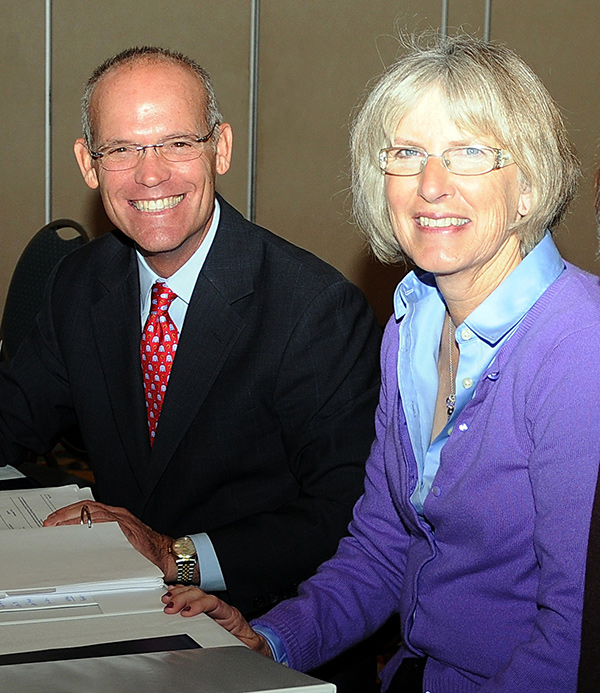I’ve been hearing this refrain for decades: horse show managers shouldn’t hire and pay stewards; that needs to be done by the U.S. Equestrian Federation. But it isn’t.
Stewards, who are supposed to report on how a show is abiding by rules and standards, may fear losing their jobs if they are critical. And indeed, they have been fired, or at the least, not-rehired by managers, simply for detailing a show’s shortcomings – as they are meant to do in an effort to improve competitions.
At the U.S. Hunter Jumper Association’s annual meeting this month in Texas, there was a litany of complaints about shows. Usually those tales are anecdotal, told by a few exhibitors here, or a few others there. But with everyone in the same room airing their grievances, it was obvious these comments weren’t merely whining; they were talking en masse about critical issues.
The topics included bad footing that can lead to accidents, emergency medical care horror stories and overcrowded lunging areas, among other items. That brought up the subject of making stewards more effective, to report when these things happen so measures can be taken to correct them or lower a show’s rating.
“Kick them in the license,” is how USHJA President Mary Babick put it in describing her vision of how to handle errant shows.
At one time, the USEF tried solving the problem with the ill-fated “fed rep” program, which was supposed to provide oversight of what went on at shows. Didn’t work. But in 2016, a new compliance office was formed to make shows toe the line.
“The goal is to have better competitions that do meet the standards, happier exhibitors; in the end happier organizers, healthier sport, happier horses,” Bill Moroney, the USEF’s CEO said at the time.
Progress has been slow, however. There are still plenty of complaints, as we heard at the USHJA meeting.
Matt Fine, the USEF’s chief compliance officer, said one element of reviewing the standards that Moroney mentioned, “is whether USEF should assign stewards at certain levels/ratings (of shows) or at USEF-named events (e.g. championships).
“There certainly has been a great deal of discussion around assigning stewards over the years,” he commented.
“We are now in a position to be able to do so at certain levels/ratings, with an incremental rollout that is limited in scope, if that is determined to be a valuable shift for the membership.”
Let me jump ahead here and say yes, it would be valuable, and something that’s long overdue. If the concept works on a limited basis, no time should be wasted in making it the protocol for hiring stewards across the board, as a step toward bringing the shows to the level where they’re supposed to be.
Speaking of that, it was revealed at the meeting that there are 226 shows in the Premier category (formerly AA), but the original intention was that 20 to 40 shows would get that lofty designation. Are all of the 226 really Premier? Apparently not, judging from what was discussed at the meeting. It’s time to determine which belong in that category so exhibitors can really count on having a “Premier” experience when they go to one of the shows that is designated that way.
How do those paying entry fees find out which shows are hitting the mark and which aren’t?
“The membership wants, rightfully, to see which competitions the compliance department has visited and the results of those visits,” said Fine.
“We are working to implement a system for displaying compliance department reports to the membership and will have that feature for 2018 competition year site visits.”
That’s very good news, another step in the right direction.
Over the last year, the department and USEF representatives have inspected competitions across the U.S.
“Based on those visits, the USEF has placed several conditions on competitions and venues for hunter/jumper competitions and other disciplines,” Fine explained.
“Our hope with each organizer is to maintain a collaborative approach to resolving identified issues,” he continued.
Placing conditions on a competition’s license, however, “has been a mechanism used for ensuring that the safety and welfare of both horse and rider are prioritized by organizers. Although the conditions have varied, all have required regular communication with USEF on competitions’ progress toward resolving identified issues and, in several cases, additional site visits prior to and during competition.”
Go ahead. Keep a close eye on them and don’t be afraid to kick them in the license until they shape up.
by Nancy Jaffer

